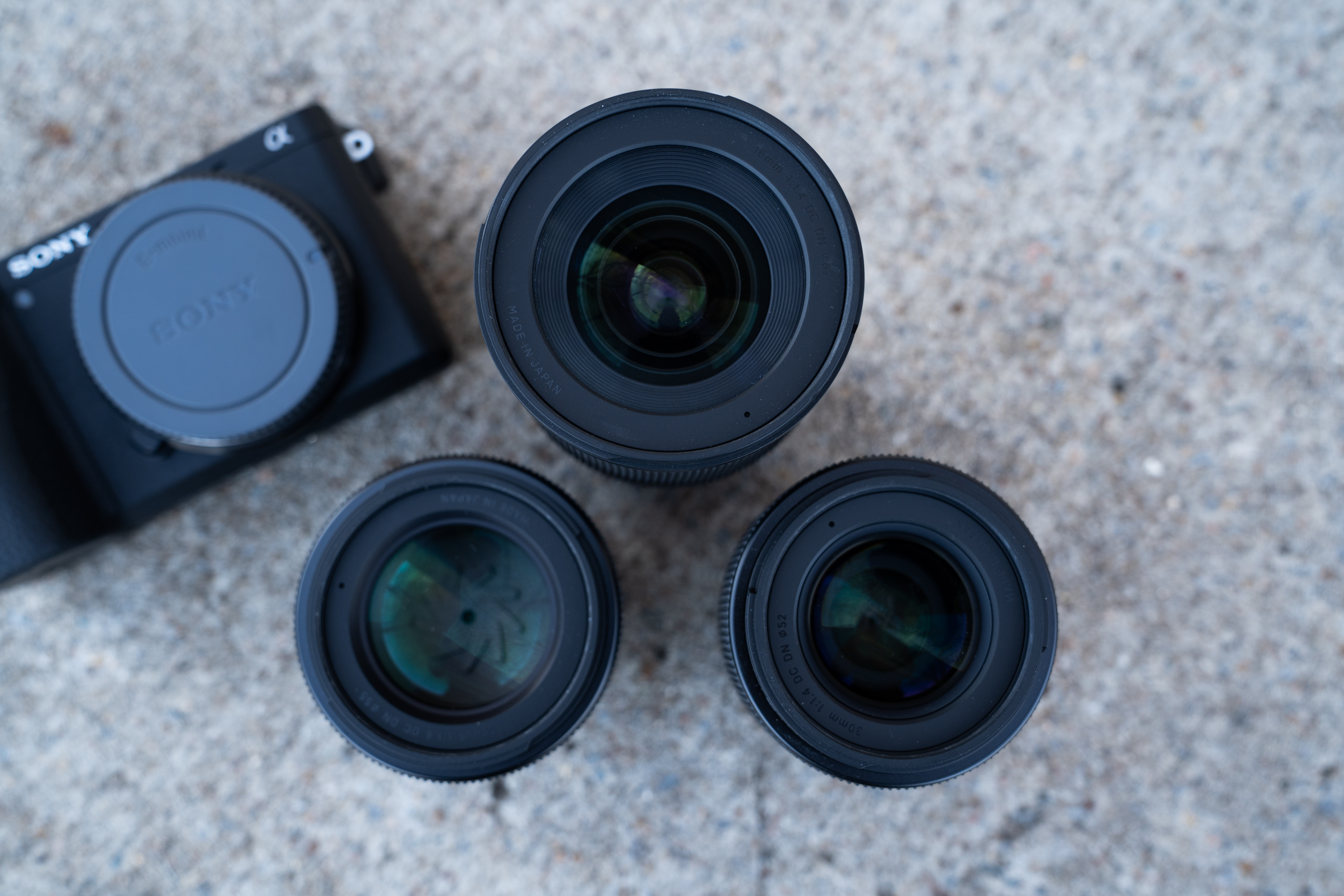Let’s face it. Camera gear is heavy. Specifically, high-quality lenses are heavy. However, if you want to produce high quality videos and photos, you have to use the right lens. Though that may be true, more and more companies are producing lenses that are smaller, lighter, and more affordable while still producing high-quality results. This opens up opportunities for rising filmmakers and photographers to do what they love, and that’s to tell amazing stories.
The SIGMA 56mm F1.4 DC DN | Contemporary is the third lens in the fast-aperture prime line for mirrorless camera systems. Already in this line are the SIGMA 30mm F1.4 DC DN | Contemporary and SIGMA 16mm F1.4 DC DN | Contemporary lens, which have already proven to be fan favorites among photographers and filmmakers alike. I fell in love the SIGMA 30mm F1.4 when it first came out; I was blown away by the performance and image quality it produced. I felt the same when the SIGMA 16mm F1.4 came out, and now that feeling continues even more so with the new SIGMA 56mm F1.4. Available for Sony E-Mount, Canon EF-M, and Micro Four Thirds, these DC DN lenses are amazing mirrorless fast-aperture primes!

Similar to its sibling lenses, the SIGMA 56mm F1.4 DC DN | Contemporary produces beautifully sharp images in photo and video. The glass inside the lens has two aspherical elements and one special low dispersion element, which helps reduce levels of chromatic aberration, or color fringing. At the same time, the lens remain light, compact, and solidly built. Autofocus performance is great as well, keeping up with cameras that shoot at 12 frames per second.
I don’t know about you, but I’m rough with my gear and take it through all sorts of environments. I’m happy to say that the SIGMA 56mm F1.4 has weather-sealed construction, making it easier for you to focus more on the story and less about the lens.

The constant f/1.4 aperture of this lens helps crop sensor cameras like the Sony a6500 perform well in low light situations, as well as create beautiful shallow depth-of-field images coveted by most photographers and filmmakers. The rounded 9-blade diaphragm renders smooth bokeh in the background which makes any subject or object in the foreground come to life.

The Math Behind Crop Sensor
In many ways, the SIGMA 56mm F1.4 DC DN | Contemporary is an ideal portrait lens for crop sensor cameras due to the crop factor of APS-C and micro four third lenses. To clarify, an APS-C camera like the Sony a6500 has a crop factor of 1.5x. This means that a 56mm lens on the a6500 has a full-frame equivalent of an 84mm lens on a full-frame camera. I realize that’s a lot of math, but here’s the basic rundown:
56mm x 1.5 = 84mm
For APS-C camera systems, here is the full-frame equivalent of the SIGMA 16mm, 30mm, and 56mm lenses:
SIGMA 16mm = 24mm full-frame equivalent
SIGMA 30mm = 45mm full-frame equivalent
SIGMA 56mm = 84mm full-frame equivalent
Had enough math? Too bad! Micro four thirds camera systems have a 2x crop factor, so you simply have to double the focal length to get the proper full-frame equivalent. Here is the full-frame equivalent of the SIGMA 16mm, 30mm, and 56mm lenses:
SIGMA 16mm = 32mm full-frame equivalent
SIGMA 30mm = 60mm full-frame equivalent
SIGMA 56mm = 112mm full-frame equivalent
In other words, crop sensor cameras get a much further reach than full-frame cameras. Sporting events, concerts, weddings, and similar events benefit from using crop sensor cameras with longer focal lengths to capture tighter shots. The silver lining with crop sensor cameras so to speak.



The SIGMA 56mm F1.4 DC DN | C completes a “lens trifecta” of sort when it comes to standard focal lengths. For APS-C cameras like the Sony a6500, the SIGMA 16mm, 30mm, and 56mm closely match the classic focal lengths of 24mm, 50mm, and 85mm on full-frame cameras. These focal lengths are considered to be the classic focal lengths to capture any type of shoot. In a funny way, these lenses can help cameras like the Sony a6500 produce images very similar to full-frame cameras.
SIGMA 56mm F1.4 DC DN | Contemporary Video Review
It’s thanks to companies like SIGMA that make it easier for us to tell the best stories we can. As technology continues to advance in camera bodies, one thing still remains true: it is the lenses that bring out the very best in a camera. Sigma lenses have a distinguished look that brings stories to life while producing sharp and beautiful images. The 56mm F1.4 DC DN | Contemporary is no exception and is affordable enough that any photographer or filmmaker can pick up.



No talk or demo regarding M43? COMEON!
* * *
Good video. . . great overall comparisons…
* * *
I have a SIGMA 85mm prime that impresses many so much, one of my photo gurus borrowed it for a few days and ordered the ART version. for his full-frame Canon…
SIGMA makes great lenses; I just wish I could afford a few more… (grin)
* * *
I see the 35mm ART on sale… even at $250 off, it’s nothing I can afford at this time… (sigh)
I like the hyper sonic motor … I have a Canon 18-135mm that I use for my video lense for that specific reason.
Not sure IF 35mm would work as my ONLY video length… (wink)
* * *
Anyhow, thanks for sharing your thoughts and the excellent demonstrations.
* * *
Until that time. . .